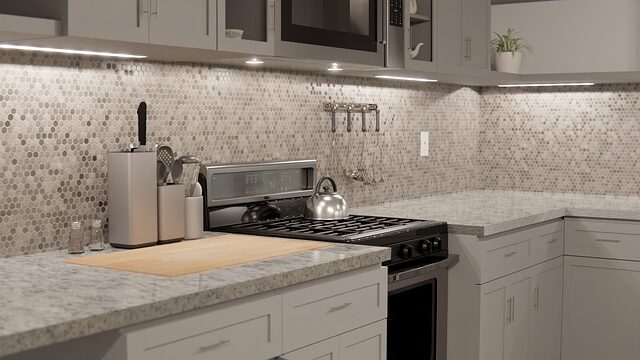
Selecting the right countertop is one of the most important choices you’ll make when updating or designing your kitchen. A countertop does far more than provide a work surface—it contributes to the kitchen’s function, durability, and overall character. With the wide range of materials now available, from natural stone to modern composites, it helps to look beyond appearance and think about how the surface will perform in everyday life.
1. Match the Material to Your Lifestyle
Begin by assessing how your kitchen is used. A busy household where meals are prepared daily will benefit from a material that resists stains and scratches, such as quartz or solid surface. These engineered products are consistent, easy to maintain, and hold up well to heavy use.
If your kitchen is more of a social space than a workspace, you may lean toward materials like marble or soapstone that offer natural beauty, even if they need extra care. Matching the countertop’s properties to your household habits is the key to long-term satisfaction.
2. Understand Care and Maintenance
Each countertop material has its own routine for upkeep. Natural stones like granite and marble should be sealed periodically to protect against moisture and staining. Butcher block requires oiling to prevent drying and splitting. Quartz, laminate, and solid surface counters are much lower maintenance—usually just a wipe with mild soap and water. Knowing how much time you’re willing to spend on maintenance can narrow your choices quickly.
3. Think About Design and Atmosphere
Countertops strongly influence the look and feel of a kitchen. Warm wood tones can create a welcoming, traditional look, while polished quartz or concrete fits seamlessly in a modern or minimalist design. Granite remains a popular middle ground, offering variety in colour and pattern while maintaining a natural appearance. Try to choose a surface that complements both your cabinetry and flooring for a balanced, cohesive style.
4. Balance Cost and Durability
Budget plays an obvious role, but it’s worth viewing the countertop as a long-term investment. Laminate is affordable and attractive, yet less durable over time. Natural and engineered stones cost more initially, but they typically last decades and can increase your home’s value. A mid-range option such as solid surface may offer the best of both worlds—reasonable cost with reliable performance.
5. Look at the Details
Edge profiles, thickness, and finishes all affect both function and safety. Rounded edges are a smart choice in family kitchens, and a matte or honed finish tends to hide smudges better than high-gloss surfaces. Whenever possible, view large samples or full slabs in natural light before making your final decision.
Final Word
The ideal countertop is one that suits your kitchen’s purpose, reflects your style, and fits comfortably within your budget. Take your time comparing materials, ask questions about care and durability, and choose a surface that will serve your household reliably for years to come.

Recent Comments